 |
|
|
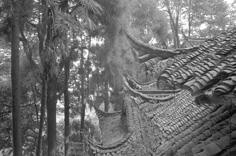 |
|
|
|
|
|
|
|
|
|
 |
|
|
 |
|
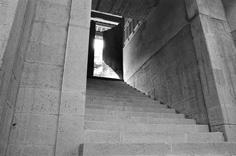 |
|
|
| Staircase/pathway on Mt. Chingchen in Sichuan province in western China. Mt. Chingchen is home to numerous ancient Taoist monasteries and is considered to be a very important mountain in the Taoist religion. This picture represents the word, Tao, which means "way" or "path". |
"Tree Hallway" entrance to a Taoist monastery on Mt. Chingchen. The pathway to the left is just outside of the gate in the distance in this picture. Parts of the classic Chinese medical text, the Shang Han Lun, were written here almost 2000 years ago. |
Another entrance to the same monastery as is to the left. |
|
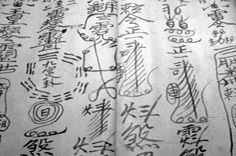 |
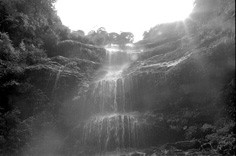 |
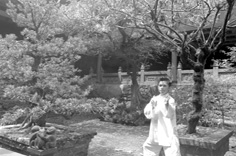 |
|
| An ancient form of Chinese writing known as Fu Lu. In order to write this way, a person has to let himself connect with a higher plane of knowledge and understanding and then let that information flow through them. It is not always understandable by the reader, but is usually visually interesting. |
Mountainside waterfall in a very beautiful natural area known as the Jade Peak Gorge outside of Cheng Du, China in Sichuan province. We were the first Westerners through this area in many decades according to the locals. |
Master ZhongXian Wu. He was one of the Qi Gong masters who traveled with us through China and would instruct us on a daily basis in the practice of Qi Gong, an ancient Chinese system of movement and meditation similar to Tai Ji Chuan. Master Wu is the lineage holder of the Mt. Emei school of Qi Gong. |
|
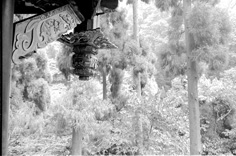 |
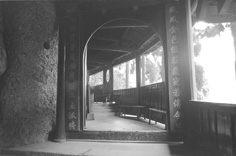 |
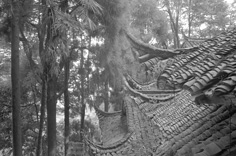 |
|
| Roof ornament hanging on a corner of a tea house overlooking the lush forests of Mt. Chingchen. The tea house is part of the Monastery of the Cave of the Heavenly Master. When the term, "Heavenly Master" is used in China, it does not mean "Master of Heaven" as we would think of it. Rather, it is a person who has attained a certain level of consciousness. |
Hallway built into the mountainside above the Monastery of the Cave of the Heavenly Master. The hallway leads to the cave where the Heavenly Mater, a renown Taoist monk, was said to have lived as a hermit over 2000 years ago. |
|
Rooftops of the Monastery of the Cave of the Heavenly Master overlooking the forest of Mt. Chingchen. |
|
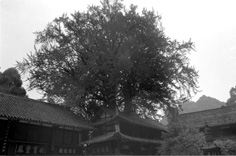 |
|
 |
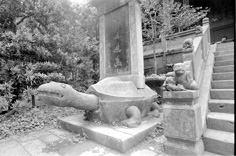 |
|
| 2000 year old Gingko tree towering over the Monastery of the Cave of the Heavenly Master on Mt. Chingchen. This one of at least 3 ancient Taoist monasteries located on the mountain. |
Sacred pagoda in the courtyard of a Taoist monastery located on Lao Jun Shan, or Mountain of the Gentleman Lao. "Lao" refers to Lao Tzu, an ancient Taoist monk credited with writing the Tao Te Jing, which is the most important of all Taoist writings. Lao Tzu himself is said to have lived at this location for a while a couple of thousand years ago. |
Turtle statue in the courtyard of the Monastery of the Cave of the Heavenly Master on Mt. Chingchen in Sichuan province, China. Turtles have a very important role in Taoist culture of a powerful sign of longevity. |
|
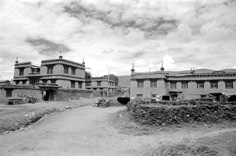 |
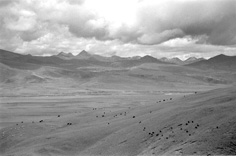 |
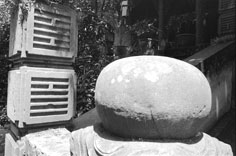 |
|
| Typical Tibetan architecture. On the left, behind the wall, is a typical "house". The Tibetan home is usually 3 stories. The first is a barn and storage, the second story is the living quarters and kitchen, and the third story is an open air, walled-in roof that is used to grow crops. Usually, there are only hand-made wooden ladders leading from one story to the next. |
The Tibetan plateau, complete with grazing Yaks in the foreground. The elevation here is about 12,000 feet or so. |
A decorative touch at a Taoist monastery on Lao Jun Shan, discussed above. On the left are two carved Chinese Hexagrams, which are composed of two sets of three lines. The solid lines represent Yin, and the broken lines represent Yang. every hexagram has a distinct meaning depending on the order of the Yin and Yang lines. |
|
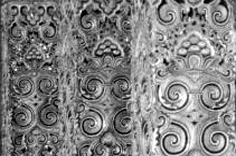 |
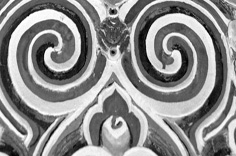 |
 |
|
| Ornate painted columns inside of a Tibetan Buddhist monastery. |
Detail of an ornate painted column inside of a Tibetan Buddhist monastery. |
The combination of fog and the burnt trees seen here was too interesting to pass up as we rode through the Tibetan countryside on horseback. |
|
 |
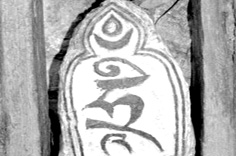 |
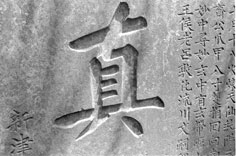 |
|
| The high mountain scene is deep in the wilds of Tibet. It took about four days on horseback from the closest road to get here. The mountain in the background is one of three similar peaks that surround this mountain meadow. The are all said to house the spirits of different Buddhas. That makes this meadow a very sacred place for Tibetans. The smoking shrine in the foreground is a place for prayer and reflection. |
Part of a statue placed to protect a Tibetan Buddhist monastery about a day away from the mountain to the left. Notice the differences between the Tibetan script and the Chinese tot he right. |
This is the Chinese character, "Zhen". It means "truth", or more deeply, "the ultimate hidden truth". It is an important character in Taoist literature, symbolizing the "true truth" that lies within all things. |
|
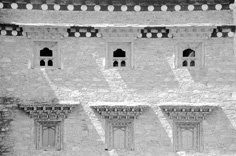 |
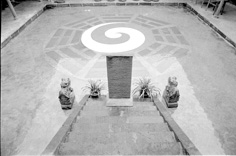 |
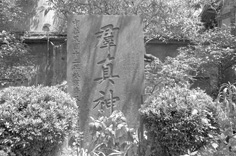 |
|
| I like the play of shadows on this very typical Tibetan structure. |
The inside courtyard of a "retreat center" in the middle of the Chinese countryside devoted to the study and teaching of Qi Gong, a Chinese system of movement and meditation. In the center is the older form of the more familiar "Yin/Yang" symbol that we know today. |
A stone carving within the walls of a Taoist monastery on Lao Jun Mountain in the Sichuan province of China. |
|
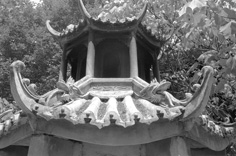 |
 |
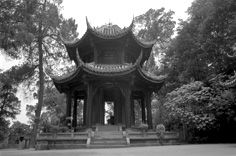 |
|
| Upper part of an interesting pagoda inside of a Taoist monastery on Lao Jun Mountain. |
One of many stone window carvings that line the outside of a small pagoda. In the background you can see the carving on the far side. |
A special ceremonial pagoda in the courtyard of a Taoist monastery on Lao Jun mountain. We would learn Qi Gong exercises here every day. |
|
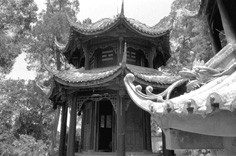 |
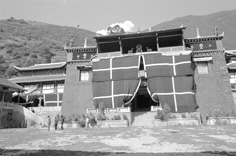 |
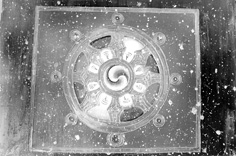 |
|
| The same pagodas as the previous pictures. |
A Tibetan Buddhist monastery within Tibet. The was the first place that we stayed after crossing the border into Tibet. It was quite a first impression! Many in our group had mild altitude sickness for the first couple days after arriving here. |
Painting of a Tibetan version of the Yin/Yang symbol. There was other painting going on at the time (which appeared to be a constant activity at the Tibetan monasteries we visited), so the door that this pictures was on had paint splattered on it from the painting going on around it. I thought it was an interesting effect. |
|
 |
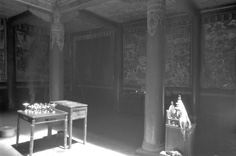 |
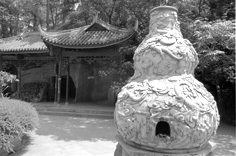 |
|
| Close up detail of the ceremonial urn to the right. |
Inside of a prayer room at the Tibetan Buddhist monastery pictured above. The small sculpture on the table on the right side of the picture is made of (slowly melting) Yak butter. |
This is a large ceremonial urn outside of a shrine build over a cave where a very renown and respected hermit lived a few centuries ago. It is on Lao Jun Mountain. |
|
|
|
|
|
|
|
|
|
|
|
|
|
|
|
|
|
|





































































